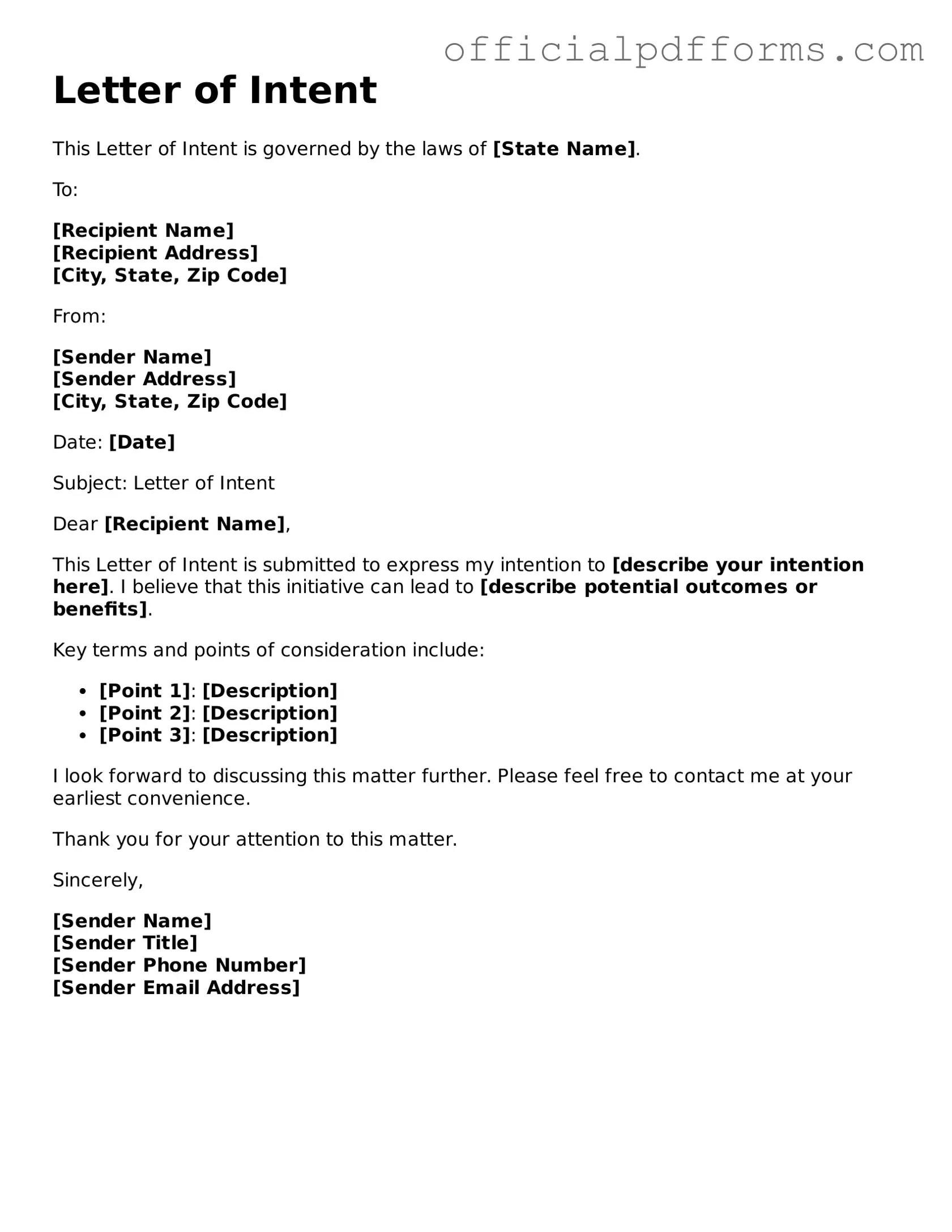What is a Letter of Intent (LOI)?
A Letter of Intent is a document that outlines the preliminary understanding between parties who intend to enter into a formal agreement. It serves as a starting point for negotiations and can detail the basic terms and conditions of the proposed agreement. While not legally binding in most cases, an LOI can signal serious intent and establish a framework for further discussions.
When should I use a Letter of Intent?
You might consider using a Letter of Intent in various situations, including:
-
Business negotiations, such as mergers or acquisitions.
-
Real estate transactions, where parties want to outline the terms before drafting a formal contract.
-
Partnerships or joint ventures, to clarify the intent of collaboration.
-
Academic or research collaborations, where institutions may wish to outline shared goals and responsibilities.
What should be included in a Letter of Intent?
A well-crafted Letter of Intent typically includes:
-
The names of the parties involved.
-
A description of the purpose of the LOI.
-
The key terms and conditions being proposed.
-
A timeline for the negotiation process.
-
Confidentiality clauses, if necessary.
-
Any disclaimers about the binding nature of the document.
Is a Letter of Intent legally binding?
Generally, a Letter of Intent is not legally binding, but it can contain binding provisions, such as confidentiality or exclusivity clauses. It’s important to clarify which parts of the LOI are meant to be enforceable. Parties should consult legal counsel to ensure that their intentions are clearly expressed in the document.
How does a Letter of Intent differ from a contract?
A Letter of Intent is typically less formal than a contract. While a contract is a legally binding agreement that outlines specific obligations and rights, an LOI serves more as a roadmap for future negotiations. An LOI may outline intentions and preliminary terms, but it does not usually create enforceable obligations in the same way a contract does.
Can I modify a Letter of Intent after it has been created?
Yes, a Letter of Intent can be modified after it has been created. Parties can agree to changes in the terms or conditions outlined in the LOI. It is advisable to document any modifications in writing to avoid misunderstandings. Clear communication is key to ensuring that all parties are on the same page regarding any updates.
What are the potential risks of using a Letter of Intent?
While a Letter of Intent can be a useful tool, there are some risks to consider:
-
Ambiguity: If the LOI is not clear, it may lead to misunderstandings about the parties' intentions.
-
Unintended binding obligations: Certain clauses may inadvertently create enforceable obligations.
-
Negotiation leverage: A poorly constructed LOI might weaken your position in subsequent negotiations.
To mitigate these risks, it is important to draft the LOI carefully and, if necessary, seek legal advice.
